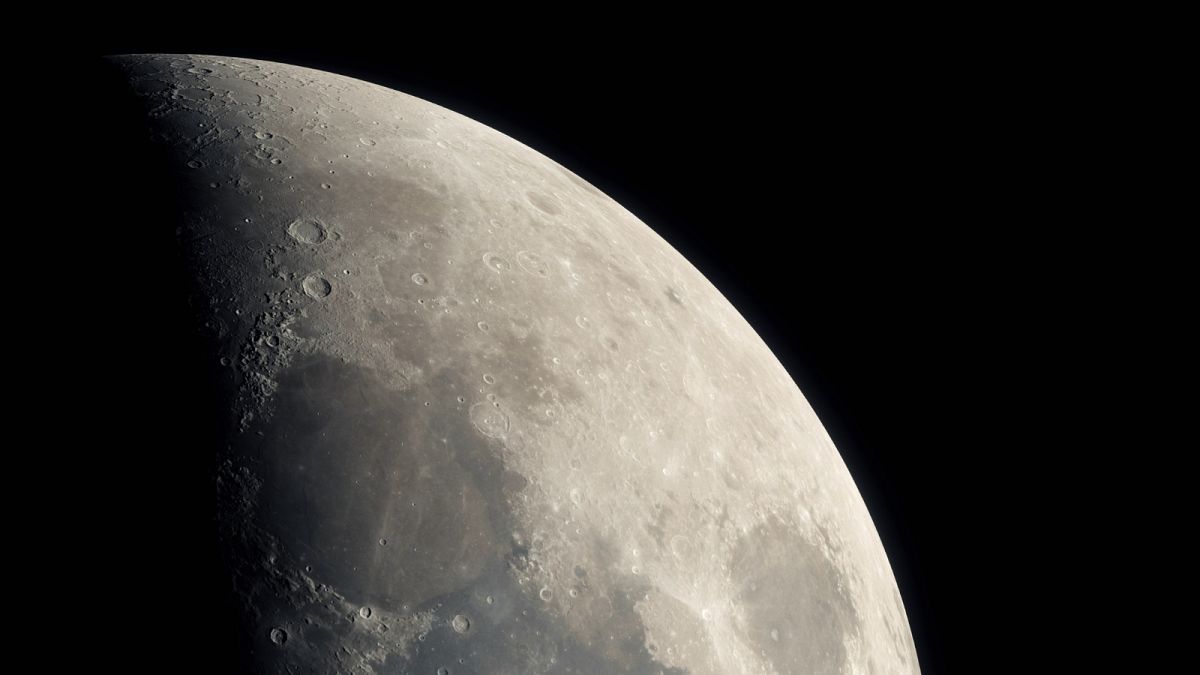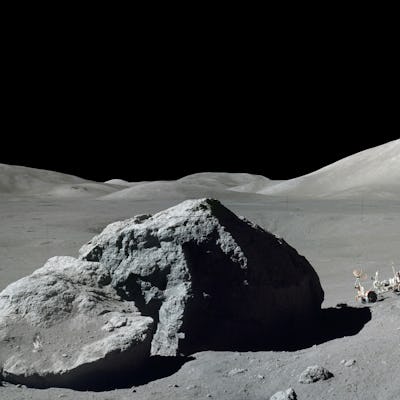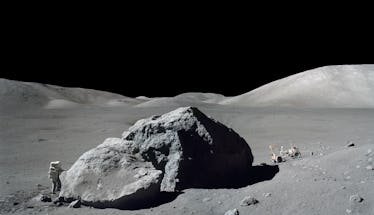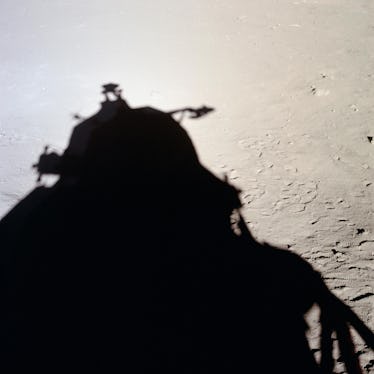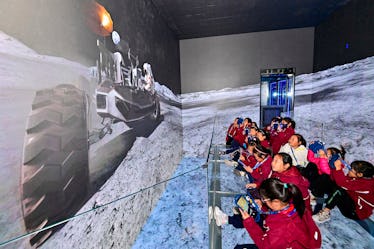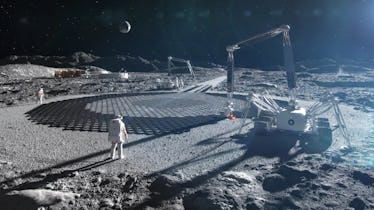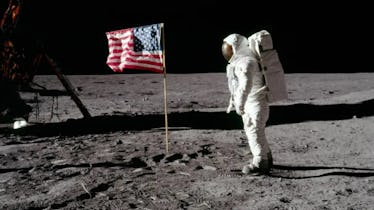Mars’ atmosphere was once thick and wet, with raindrops that were so tiny they couldn’t even penetrate the soil
By RAE HODGE
SALON
PUBLISHED MARCH 6, 2024
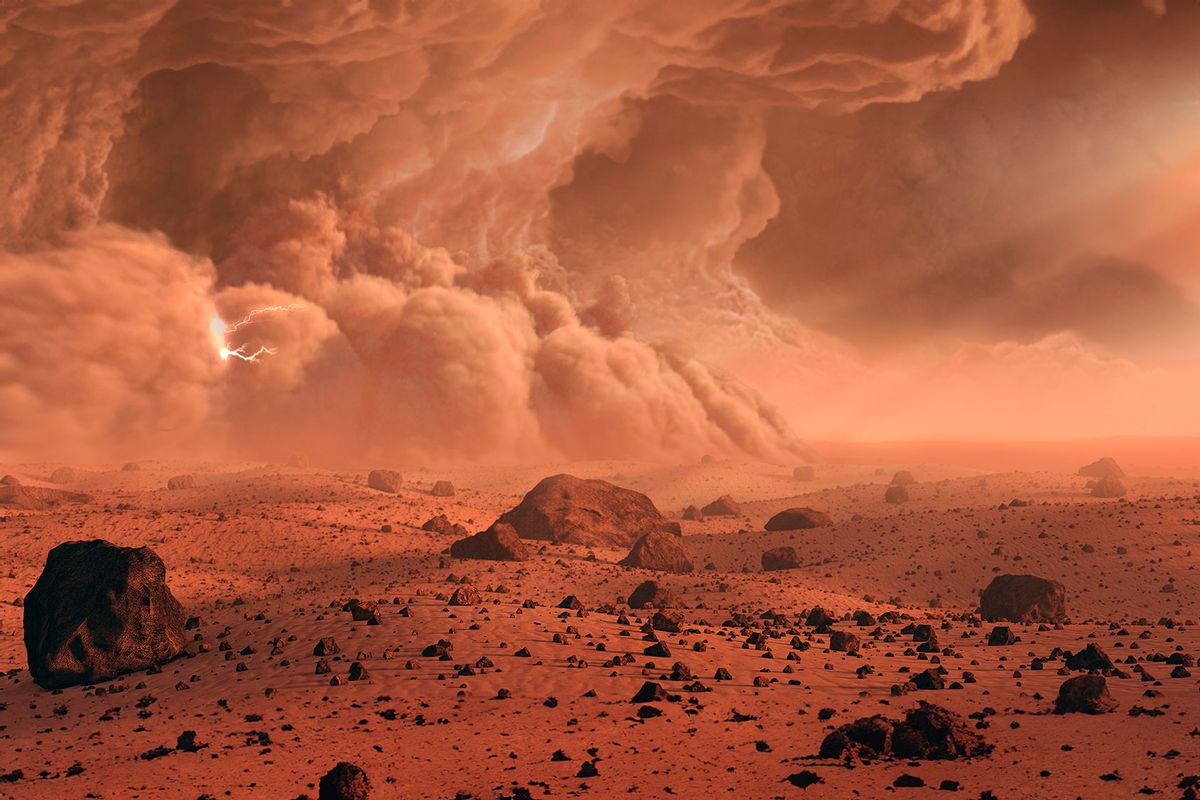
If you suddenly found yourself standing on the surface of Mars, it would feel like you’d been transported into a dusty space western. The arid soil lays a rocky palette of red powder across the horizon, where you’d see sprawling canyons and old volcanoes with edges whipped sharp by unforgiving wind storms. But, 4.5 billion years ago, this barren wasteland was home to a rich system of groundwater, vast oceans and galloping rivers. And in the the past month, a growing tide of scientific research has begun uncovering a hidden history of Mars’ once-rushing waters.
Evidence of an ancient planet-wide groundwater system, previously only theorized, was discovered in 2019. But only recently, in early February, a NASA spacecraft brought back exciting images of Mars’ surface which contained evidence the planet teemed with flowing water across an ancient spread of now-dry lake beds, channels, valleys and gullies. The same week, the European Space Agency’s Mars Express discovered ice buried under the equator, hinting at massive groundwater aquifers.
Related
NASA's space helicopter may be dead, but the agency's next gen are nearing lift-off
Unlocking the secret of how those aquifers recharge (or refill) is the next step in exploring a possible human future on Mars. Last November, a team of Chinese scientists found a way to create oxygen out of the water found on Mars. Now, researchers at the University of Texas at Austin have combined a number of methods — from new computer models to simple back-of-the-envelope calculations — to uncover something curious about how that ice came to be in the first place. Despite a climate full of surging rainstorms, the scientists said, early Martian soil simply didn’t absorb much of it. The groundwater systems refilled themselves, but we have no idea how.
“Understanding groundwater flow can help inform where to find water today,” said lead study author Eric Hiatt, in a university release. “Whether you’re looking for signs of ancient life, trying to sustain human explorers, or making rocket fuel to get back home to Earth, it’s essential to know where the water would most likely be.”
"Understanding groundwater flow can help inform where to find water today."
The new findings, published in the journal Icarus, raise even more questions about how water systems work on Mars compared to those which exist on Earth today. And, because these groundwater systems likely fed Mars’ ancient network of lakes, finding out how long it took those lakes to fill up and overflow onto the surface could help us figure out whether, and where, life on Mars may have existed in the past.
“The fact that the groundwater isn’t as big of a process could mean that other things are,” Hiatt said. “It might magnify the importance of runoff, or it could mean that it just didn’t rain as much on Mars. But it’s just fundamentally different from how we think about [water] on Earth.”
Much of the groundwater mystery centers on one of Mars’ most notable features, called “the great dichotomy.” The term describes the stark difference in land height between two of the planet’s regions — the northern lowlands and the southern highlands. This contrast in elevation is where we can see how groundwater aquifers surged up to the surface, creating markers and leaving a trail of evidence for scientists to follow today.
Researchers said most of the liquid water that existed on Mars billions of years ago resided in a vast ocean in the northern lowlands. But when Hiatt’s team used their new combination of computer modeling techniques to analyze the great dichotomy, they were able to estimate how much groundwater recharge occurred in the Martian southern highlands.
Want more health and science stories in your inbox? Subscribe to Salon's weekly newsletter Lab Notes.
The mystery deepened when researchers found the groundwater aquifers in the southern highlands on Mars only recharged about 0.03 millimeters (0.001 inches) per year. The Trinity and Edwards-Trinity Plateau aquifers — which provide water for the city of San Antonio — range between 2.5 to 50 millimeters (0.1 inches to 2 inches) per year. That’s 80 to 1600 times more annual recharge than Martian groundwater.
“While other studies have simulated groundwater flow on Mars using similar techniques, this research by [Hiatt] published in [Icarus] is the first to incorporate the influence of the oceans that existed on Mars more than three billion years ago,” in the Hellas, Argyre, and Borealis basins, the university said in a tweet.
Even as the sharp differences between Mars and Earth’s water systems emerge in the team’s latest findings, research like this could also help us understand how to survive water and climate changes on our own planet. The technology we’re using to find water on Mars now, for instance, can also double in value for our own planet’s inhabitants. Using it to find leaks in public water systems has already proven to be a more effective and inexpensive than traditional methods.
"When we think about what Mars looked like 3.5 billion years ago, we probably should be thinking about an environment that in some ways looks a lot like Earth," said University of Texas Associate Professor Tim Goudge in a 2021 interview.
Mars’ atmosphere was thick and wet, with four times more pressure than Earth’s today and resulting raindrops that were so tiny they looked more like a dense fog and couldn’t even penetrate the soil. As that pressure waned, though, rainfall came down hard on the Red Planet’s surface, carving grooves and valleys. Just as floods on Earth carved out the Grand Canyon, catastrophic floods accounted for a quarter of Mars’ surface erosion, according to UTA researchers.
Then things changed. Mars lost its magnetic field, and with it the vast oceans which contained more water than contained in the Earth’s Artic Ocean today. A new theory from the University of Chicago emerged on Feb. 14 after a duo of scientists examined sediment and erosion evidence on Mars and noticed a pattern in the planet’s history.
“Like Earth, which has over the past billion years experienced periods of global glaciations and hyperthermals, the climate history of early Mars may have been intermittent,” the study authors write in Nature Geosciences.
“We suggest that Mars did not undergo a single wet-to-dry transition, but rather experienced seven major climate transitions, with the planet intermittently under climates warm enough to support surface liquid water even after 3.0 billion years ago (Ga). However, there is evidence for long dry spells, with some locations fully dry after 3.6 Ga.”
The study also looks into the reasons driving these climate shifts — testing hypotheses about volcanic eruptions and changes in the planet’s axial tilt. This new wave of Martian water research is quickly expanding our base of knowledge about alien climates, and understanding how a procession of climate changes could dramatically shape Mars could give us key insight into the challenges Earth may face as it encounters its own climate upheaval.
Critically, though, the more we can figure out about the mystery of Martian water, the sooner we can figure out how human life on a new planet could work — and how, if ever, it worked in the past.
Read more
about water and life on Mars
A simple algorithm could reveal the ghosts of alien life in Mars dirt, study finds
By RAE HODGE
is a science reporter for Salon. Her data-driven, investigative coverage spans more than a decade, including prior roles with CNET, the AP, NPR, the BBC and others. She can be found on Mastodon at @raehodge@newsie.social.
NASA's Mars Curiosity rover hides in plain sight in this aerial photo of the treacherous Martian landscape.

What it is: NASA's Curiosity Mars rover
When it was published: Feb. 29, 2024
Why it's so special: Can you spot the hidden robot on Mars?
In this photo, NASA's Curiosity rover, which has been exploring the surface of Mars since 2012, appears as a tiny, dark speck. The rover is seen on the steep slopes of Upper Gediz Vallis in a vast landscape scarred by dark and light bands.
Curiosity's current location is a massive achievement for the engineers at NASA's Jet Propulsion Laboratory, who built and now remotely operate the rover from 203 million miles (326 million kilometers) away. Curiosity spent three years gradually climbing Gediz Vallis Ridge; after three failed attempts, it finally succeeded in August 2023, according to NASA.
The space agency thinks water flowed in this region 3 billion years ago, and carried mud and boulders with it to create the ridge. Early last year, Curiosity found evidence of water and waves on Mars.
This image was taken on Dec. 29, the 4,051st Martian day, or sol, of the rover's mission, and NASA published the photo Feb. 29. The view from space was captured directly overhead by the High-Resolution Imaging Science Experiment (HiRISE) camera on NASA's Mars Reconnaissance Orbiter, which has been orbiting the Red Planet since March 2006. According to NASA, the camera is capable of viewing objects as small as a dinner table on Mars' surface.
RELATED STORIES
—Space photo of the week: A young star sweeps up its cosmic neighborhood in vibrant new Hubble image
—Space photo of the week: 'El Gordo' galaxy cluster shakes its guts in largest-ever magnetic field map of space
—Space photo of the week: Swirling 'Spanish Dancer Galaxy' stares down NASA's Hubble
In addition to the Curiosity rover, NASA has its Perseverance rover on the surface of Mars. Also in orbit, alongside the Mars Reconnaissance Orbiter, are NASA's Odyssey and MAVEN (Mars Atmosphere and Volatile Evolution) spacecraft. A tiny remote-controlled helicopter named Ingenuity, which accompanied the Perseverance rover on its Martian journey for the last three years, recently sustained irreparable damage on its final, 72nd flight.

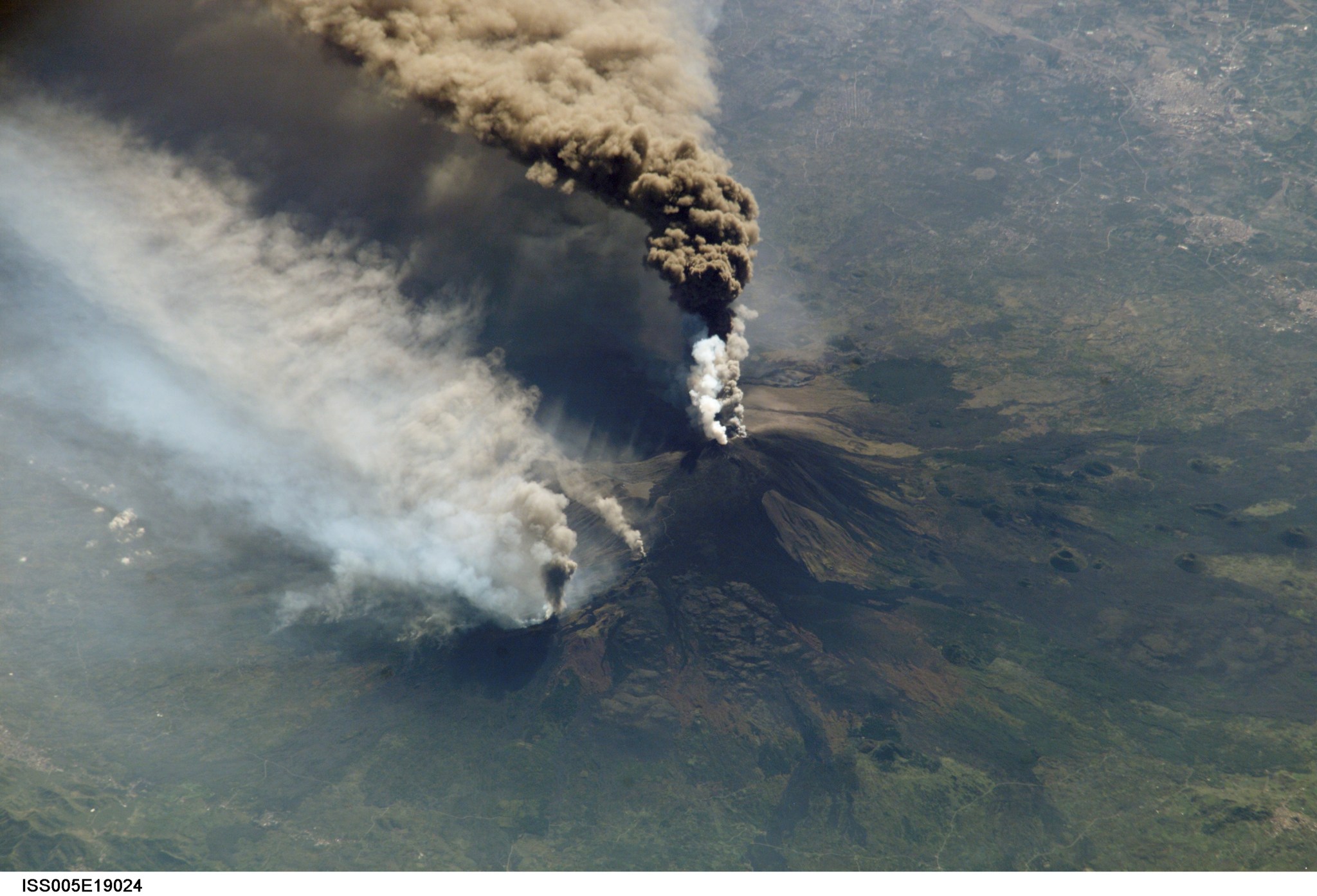







:quality(70)/cloudfront-us-east-1.images.arcpublishing.com/archetype/FLTNX2LKGNDW7IC3WBAQHJFPFA.jpg)
